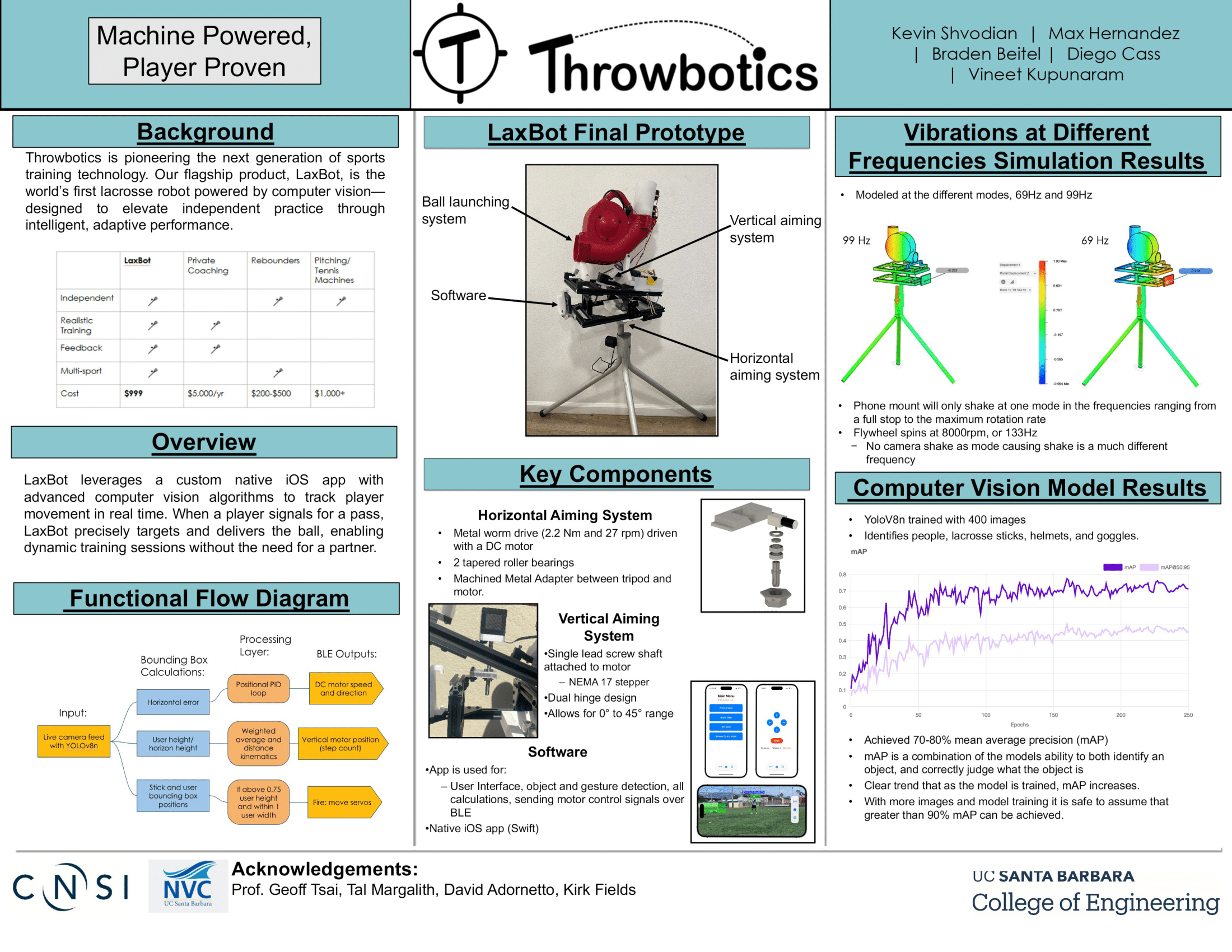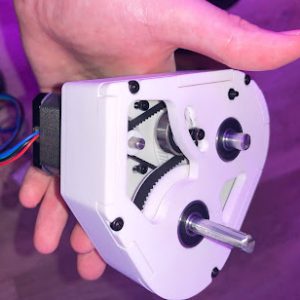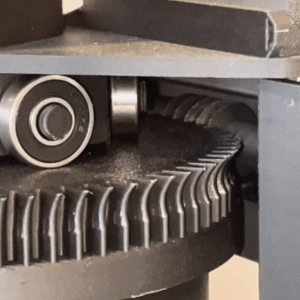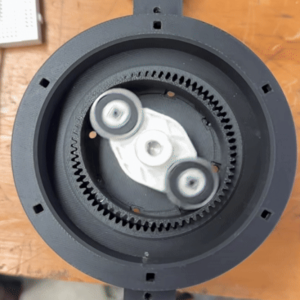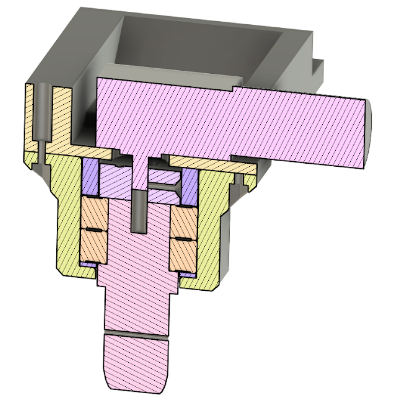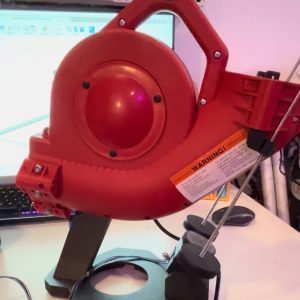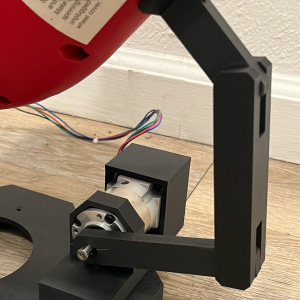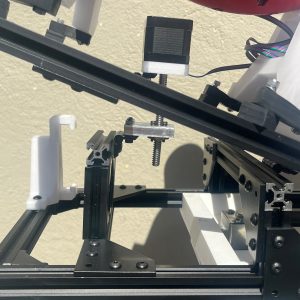Capstone Project: Throwbotics
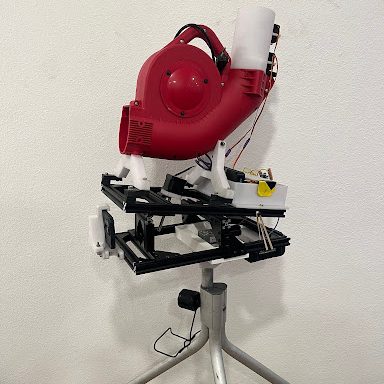
LaxBot Overview
LaxBot is an autonomous machine designed to deliver accurate passes lacrosse players allowing single player training. Utilizing an off the shelf baseball pitching machine, LaxBot delivers on the promise of creating a proof of concept product at a competitive production cost when compared to competitors of a similar market. It is powered through a drill battery and the iPhone's software. My role on the project was delegated to the aiming mechanisms of the machine and portions of the design, allowing me to practice CAD design on Fusion360, 3D printing practices, and component selection to cut costs yet maintain quality.
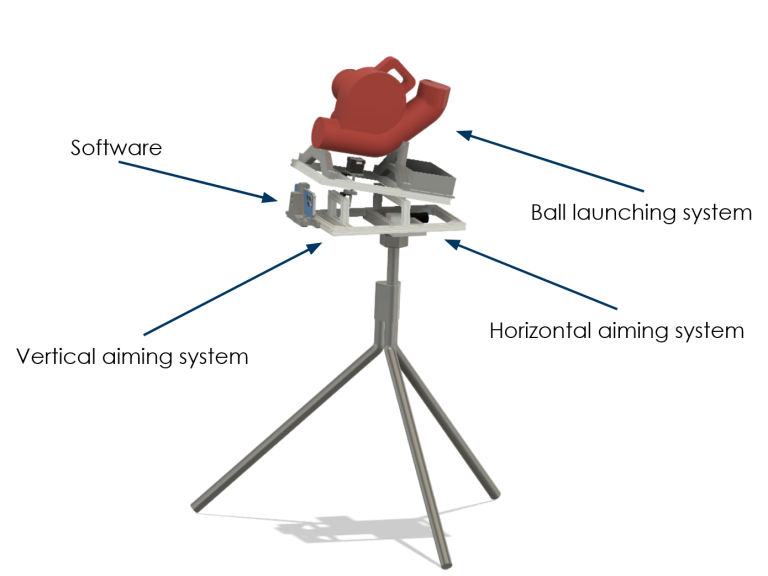
Demonstration
Horizontal Aiming System
The system needs to change its angle in order to maintain accuracy so a horizontal aiming system is employed with the motor and gears attached to the top half of the machine and the shaft is sitting within the tripod. Horizontal movement began with the first prototype, a 3D printed belt drive powered by a NEMA 17 stepper motor creating a 70:1 gear ratio. With the realization that the belt drive was immobile, it was deduced that the complexity of the drive was too high allowing for many sources of error. The second prototype was a 3D printed worm drive powered by the same NEMA 17 motor creating a 70:1 gear ratio and producing 5º per second of the rotational speed. Due to the 3D printed nature, there was considerable flex in the system leading to major losses in power. The third prototype is a 3D printed harmonic drive powered by a stronger NEMA 23 stepper motor creating a 34:1 gear ratio but providing more torque and a faster speed at 46º per second. This would provide sufficient power and serve the current purpose of getting a proof of concept down, but for the future, the team wanted a more robust system moving to the final design, the metal worm drive. I chose for this worm drive to be paired with a DC motor as the PID control system allows for constant feedback for the position angle, cutting the cost of the motor, and two thrust bearings were paired together to alleviate the weight from the previous skateboard bearings that the entire machine used to sit on.
Vertical Aiming System
Although not as vital as the horizontal aiming, the vertical aiming system allows for the adjustment of distance based on testing and the firing angle of the ball projectile. The first prototype was a lead screw with 3D printed gears creating a linear actuator powered by a NEMA 17 stepper motor. This system was wobbly and unbalanced so I switched to linkage arms in the second prototype with a scrap stepper motor. This system was hard to control and had a much too high holding torque creating a large amount of heat and energy waste. Changes in the frame allowed for a lead screw to be redeployed, but this time I went with a NEMA 17 with an attached lead screw reducing the error seen by the double lead screw actuator. There is a hinge on the lead screw and a hinge on the motor creating a 3 bar linkage with a variable arm allowing for stable control.
Group Work
My team and I worked together to create something we can appreciate. It really taught me how to function and be efficient on a team as well as the joy of rapid prototyping and figuring out concepts with others. Through integrating components together, connecting the digital to the physical, and simply brainstorming and bouncing ideas off of each other, our project was a delight to demonstrate and has the potential to become a real product.
For more information, check out the Throwbotics team poster or simply contact me and ask any question you’d like!
